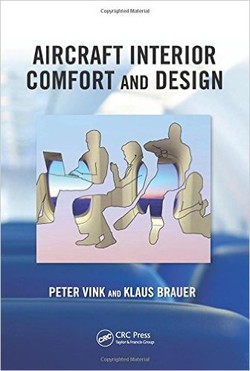ارگونومی در طراحی، روشها و تکنیکها

امروزه افراد، برای رسیدن به اهداف خاصشان، در کنار فعالیتهای روزانه خود، در محیطهای کاری و تفریحی، با موارد زیادی روبرو هستند (ازجمله سختافزار، نرمافزار، ساختمانها، فضاها، جوامع و افراد دیگر).
این موارد روزبهروز، پیچیدهتر میشوند و امکانات و عملکردهایی را با هم ادغام میسازند که هرگز تاکنون وجود نداشتهاند، مانند اتوماسیون، استفاده از محیطهای مجازی، اتصالات، شخصیسازی. کتاب ارگونومی در طراحی، به آنالیز تعاملات سیستم – انسان، از دیدگاه ارگونومی، کمک میکند، صرفنظر از آنکه چقدر ساده یا پیچیده هستند، درحالیکه به ادغام نیازهای کاربران و کارکنان به شیوهای امن، کارآمد و رضایتبخش میپردازد. کتاب حاضر، یک بازبینی جامع از تحولات جدید ارگونومی رایج، در زمینه روشها و تکنیکهای طراحی ارائه میدهد، که بر روی محصولات، ماشینآلات، تجهیزات، ایستگاههای کاری و سیستمها اعمال شدهاند، در عین حال، تکنولوژیهای جدید و کاربردهای آنها را نیز در نظر دارد.
این کتاب، در چهار بخش و 30 فصل سازماندهی شده است که حاوی موضوعاتی همچون جنبههای مفهومی ارگونومی در طراحی، دانش ویژگیهای انسانی بکاربردهشده در طراحی و جنبههای متدولوژیکی طراحی میباشد. مثالهای موجود در کتاب، چندین حوزه از طراحی را پوشش میدهند، که شامل محصولات مصرفی، بازیها، حملونقل، سیستم آموزشی، معماری، مد، پایداری، بیومکانیک، سیستمهای هوشمند، واقعیت مجازی و طراحی سیستم عصبی میباشند، اما محدود به این موارد نمیشوند.
این موارد روزبهروز، پیچیدهتر میشوند و امکانات و عملکردهایی را با هم ادغام میسازند که هرگز تاکنون وجود نداشتهاند، مانند اتوماسیون، استفاده از محیطهای مجازی، اتصالات، شخصیسازی. کتاب ارگونومی در طراحی، به آنالیز تعاملات سیستم – انسان، از دیدگاه ارگونومی، کمک میکند، صرفنظر از آنکه چقدر ساده یا پیچیده هستند، درحالیکه به ادغام نیازهای کاربران و کارکنان به شیوهای امن، کارآمد و رضایتبخش میپردازد. کتاب حاضر، یک بازبینی جامع از تحولات جدید ارگونومی رایج، در زمینه روشها و تکنیکهای طراحی ارائه میدهد، که بر روی محصولات، ماشینآلات، تجهیزات، ایستگاههای کاری و سیستمها اعمال شدهاند، در عین حال، تکنولوژیهای جدید و کاربردهای آنها را نیز در نظر دارد.
این کتاب، در چهار بخش و 30 فصل سازماندهی شده است که حاوی موضوعاتی همچون جنبههای مفهومی ارگونومی در طراحی، دانش ویژگیهای انسانی بکاربردهشده در طراحی و جنبههای متدولوژیکی طراحی میباشد. مثالهای موجود در کتاب، چندین حوزه از طراحی را پوشش میدهند، که شامل محصولات مصرفی، بازیها، حملونقل، سیستم آموزشی، معماری، مد، پایداری، بیومکانیک، سیستمهای هوشمند، واقعیت مجازی و طراحی سیستم عصبی میباشند، اما محدود به این موارد نمیشوند.
سال انتشار: 2016 | 532 صفحه | حجم فایل: 31 مگابایت | زبان: انگلیسی
Ergonomics in Design: Methods and Techniques (Human Factors and Ergonomics)
نویسنده
Marcelo M. Soares, Francisco Rebelo
ناشر
CRC Press
ISBN10:
1498760708
ISBN13:
9781498760706
قیمت: 16000 تومان
برچسبها: ارگونومی
Currently people deal with various entities (such as hardware, software, buildings, spaces, communities and other people), to meet specific goals while going about their everyday activities in work and leisure environments. These entities have become more and more complex and incorporate functions that hitherto had never been allocated such as automation, use in virtual environments, connectivity, personalization, mobility and friendliness. This book contributes to the analysis of human-system interactions from the perspective of ergonomics, regardless of how simple or complex they are, while incorporating the needs of users and workers in a healthy safe, efficient and enjoyable manner.
This book provides a comprehensive review of the state of the art of current ergonomic in design methods and techniques that are being applied to products, machinery, equipment, workstations and systems while taking new technologies and their applications into consideration.
Ergonomics in Design: Methods and Techniques is organized into four sections and 30 chapters covering topics such as conceptual aspects of ergonomics in design, the knowledge of human characteristics applied to design, and the methodological aspects of design. Examples are shown in several areas of design including, but not limited to, consumer products, games, transport, education, architecture, fashion, sustainability, biomechanics, intelligent systems, virtual reality, and neurodesign.
This book will:
Introduces the newest developments in social-cultural approaches
Shows different ergonomics in design methodological approaches
Divulges the ways that ergonomics can contribute to a successful design
Applies different subjects to support the design including –ergonomics, engineering, architecture, urbanism, neuro, and product designs.
Presents recent technologies in ergonomic design, as applied to product design.
With the contributions from a team of 75 researchers from 11 countries, the book covers the state-of-the-art of ergonomics in a way to produce better design.










































